Women in Eritrean music
This text provides an overview of some of the female artists who have contributed to the growth of the Eritrean music scene, both before and after the country's independence.
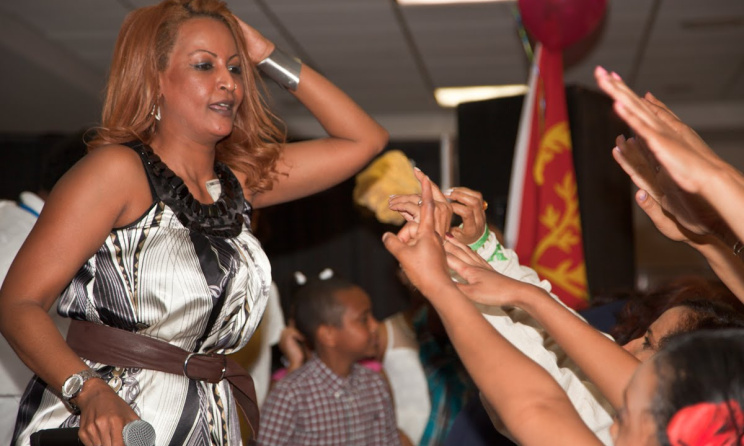 Eritrean artist Helen Meles. Photo: www.Youtube.com
Eritrean artist Helen Meles. Photo: www.Youtube.com
Female artists during the struggle for independence
Female singers and musicians who joined the Eritrean forces in the 1970s became the first to break from the old tradition, in which women were not welcome to perform music in public. Women joined Eritrea's independence movements in the early 1970s, a decade after the start of the war.
With the formation of cultural troupes in divisions and later full-fledged musical bands, women singers were assimilated as performers, actors and singers. The establishment of the Asmara Theater Association (Ma.Te.Ea) in 1961 is credited in developing the musical careers of numerous trailblazing female artists.
Tebereh Tesfahuney first joined the Asmara Theater Association in 1963 at the age of 16 as a dancer. She soon found fame for her hit song ‘Eti Gezana Abi Hedmo’ with its embedded meaning about the Ethiopian encroachment into Eritrea. This single was censored in the mid-1960s. Another single, ‘Aba Shawel’, renders a scenic depiction of the moon shining above the Abashawel ghetto, inferring the flag of the Eritrean Liberation Front that had been fighting an armed struggle for freedom since 1961. Tebereh died in 2007. [i]
Tsehaytu Beraki[ii] is another leading female Eritrean artist. Born in 1939 in the small village of Quatit, she soon picked up the krar (five-string harp) and after moving to the capital Asmara became a popular singer in bars, drawing men into the local traditional beer houses. In the 1970s she was discovered by producer Tewelde Redda, who took her to Addis Ababa to record. As Beraki's popularity grew, the political situation got more and more intense. Tsehaytu soon became involved in Eritrea's fight for independence. She changed the themes of her songs from love to more political statements. After the Eritrean Liberation Front (ELF) that she supported was pushed into Sudan by the rival Eritrean People's Liberation Front (EPLF), she didn’t give up singing. Instead she went back to Eritrea's villages to sing and support women and children. ‘Aminey’ and 'Laley Bola' were some of her most cherished singles.
Amlest Abbay is another iconic female singer of the era. She is mostly known by her popular song ‘Dekise niere teberabire’ (I have awakened from my sleep), which was released in the 1970s.
While leading artists of the 1970s joined the fight for Eritrea’s independence, young female fighters from diverse ethnic and social backgrounds took part in performances for the fighters and the public in liberated areas and often toured in the Sudan and Europe. Their songs mainly carried revolutionary messages. Eritrean music was essentially revitalized during this era, with the conversion and nurturing of a multitude of artistic skills within these troupes.
Singers like Abrehet Ankere, Abrehet Berhane, Brikti Ghebreslase, Fatma Suleiman, Zeineb Beshir and others produced songs throughout the 1980s that rallied the youth behind the causes of the armed movement. Existing issues of social injustice were addressed in songs such as ‘Dehan Kuni Wushate’ (farewell kitchen) by Brkti Ghebreslassie, who sang about breaking free from the shackles that kept women oppressed in traditional society. The emancipatory lyrics of the song glorify the new image of the liberated Eritrean woman, working hard for social change and emancipation.
The armed movement for freedom deserves credit for bringing to stage female singers from many conservative cultures in Eritrea. For example, Zeineb Beshir and Kedija Adem from Tigre, Hajait Mendel from Belen, Dahab Faytinga from Kunama and Fatuma Sulieman from Saho became the first female singers from their respective ethnic groups to perform in public.
Female artists since independence
After Eritrea's independence in 1991, the army's music troupes disintegrated and artists set out on their own to perform and record their music. Many of the established female singers ultimately left the industry, choosing different paths in life, while others had to adapt to this new environment as independent artists.
The Eritrean music scene during the 1990s was generally inhabited by younger ex-fighters who joined the industry during the early years of independence. These singers were mainly those who grew up in the Revolutionary School in Sahel (where the EPLF was stationed) and those who belonged to the ‘Red Flowers’ branches in liberated areas.
In 1993, former fighters came together to form Shushan Band and toured across Eritrea and the world to showcase the talent of female singers like Dahab Faytinga, Tsighe Teklesenbet and Abeba Haile. This band also brought to the spotlight some of the greatest musical talent in Eritrea, like Senait Debessai (guitar), Veronica Solomon (guitar), Azieb Solomon, Freweini Tewelde (saxophone), Yordanos Solomon (guitar) and Almaz Berhe (keyboard).
Dahab Faytinga is an ex-fighter singer who is widely acclaimed both locally and internationally. A dazzling vocalist, dancer and krar player, her music incorporates instruments from various Eritrean ethnic groups. She released her albums Numey (meaning 'don't interrupt the narrator') in 2000 and Eritrea (2003) through Cobalt Records in Paris, France. Her songs also feature on albums like World Divas (Wagram Records, 2006), Africolor (Cobalt, 2008) and the Asmara All Stars' Eritrea's Got Soul (Out Here Records, 2010).
Like Faytinga, Helen Meles has her roots in the revolutionary movement and a member of the Red Flowers juvenile cultural troupe. She rose to fame in 1990 with her song 'Abey Keydu Slmatki', a tribute to the war-torn coastal town of Massawa. After independence she released cover versions of the legendary 1960s diva Tebereh Tesfahuney, not only bringing the old tunes back to life but showcasing her own talent. Her subsequent albums Reseani (2003), Halewat (2006) and Beal Sham (2012) have been highly acclaimed, establishing her name among Eritrea’s finest female artists.
Elsa Kidane became a sensation at the dawn of freedom with her performance of the song ‘Weledi' at the Eritrean Festival in Bologna, Italy in 1990, As with Helen Meles, she is still regarded as one of Eritrea's key contemporary female artists. She received high admiration for her albums Gobez wedi and Belo.
Other female singers like Zeyneb Beshir (Tigre language), Fatuma Ibrahim (Bilen language) and Fatna Sulieman (Saho and Afar languages) have played a vital role in contemporary Eritrean music, taking the lead in producing music in their respective languages, which have arguably not yet stepped into the commercial sphere.
While former fighters assumed the lead in the music scene before 2000, in more recent times younger female singers have emerged. For example, Feven Tsegay is one of the most prominent female singers in Eritrea today with her contemporary songs of love and relationships. She has released albums like Dendani and singles such as ‘Habibi’ and ‘Fetyeka’, which were hits for many months in Asmara.
Many of the today’s singers have come to shine with single hits rather than albums. For example, Ruta Abreha's ‘Tejemreni Aleka’, Senait Amine's ‘Ajbeni’, Bsrat Aregai's 'Mis Call' and Solomie Mahray's ‘Telmedien’ continue to entertain the Eritrean public. Artists' apparent preference to release singles is related to a drop in album sales in general. Most of the current single hits cater for the digitally distributed entertainment market and the nightclub scene in Eritrea.
Eritrea's female artists have come a long way since the days when they were prevented from practicing or performing in public. They have defied convention and today sing about love, relationship and sensuality.
Further reading:
Rena, R. (2009). 'Role of Musical Songs in the Independence Struggle of Eritrean People'. International Journal of Human Development and Information System. Pp. 93-104.
[i] http://www.qienit.com/tebreh-tesfuhuney-a-musical-visionary/ [ii] http://mereja.com/forum/viewtopic.php?f=2&t=65599&start=20













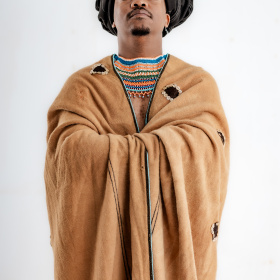

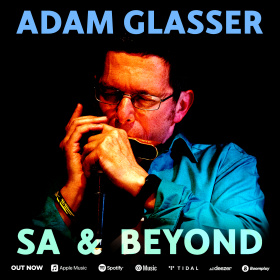
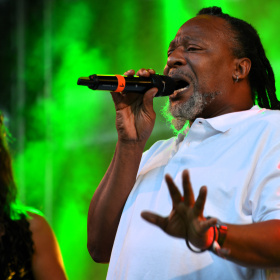
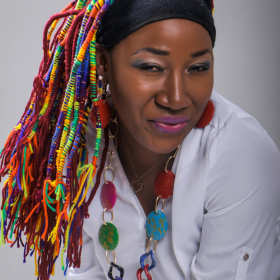


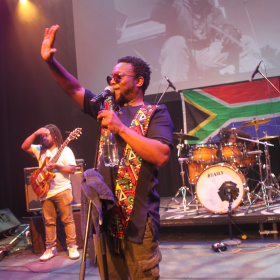



Comments
Log in or register to post comments